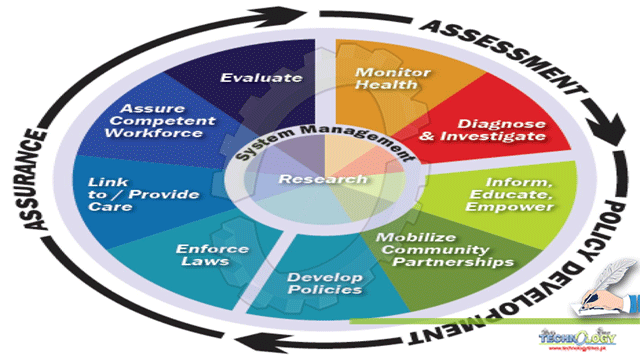Public health services have 3 core functions.

Assessment

Policy Development
Assurance
1. ASSESSMENT
Monitor health status to identify community health problems
Examples: determining health service needs; identifying threats to health;
- Diagnose and investigate health problems and health hazards in the community.
Examples: Maintaining active infections disease epidemiology programs
2. Policy Development
- Inform, educate and empower people about health issues.
Examples: Participating in community development efforts; participating in health education efforts with schools
- Mobilize community partnerships to identify and solve health problems.
Examples: Undertaking defined health improvement planning efforts and projects
- Develop policies and plans that support individual and community health efforts.
Examples: Developing and tracking measurable objectives; fostering leadership development at all levels; developing policies and legislation to guide the practice of public health
3. Assurance
Enforce laws and regulations that protect health and ensure safety.
Examples: Enforcing sanitation codes; protecting drinking water supplies; providing animal control services; monitoring the quality of care
- Research for new insights and solutions to health problems.
Examples: Link with institutions of higher learning; ensure staff training for participation in responding to outbreaks and in conducting research
- Link people to needed personal health services and make sure the provision of health care with unavailable.
Examples: assessing the effectiveness of programs; providing culturally appropriate communication and materials;
- Assure a competent public health and personal health care workforce.
Examples: providing education, training, assessment of staff; establishing efficient procedures for licensure; creating partnerships with professional training programs
- Evaluate effectiveness, accessibility and quality of personal and population-based health services.
Examples: Assessing the effectiveness of programs; providing information for allocating resources and reshaping programs